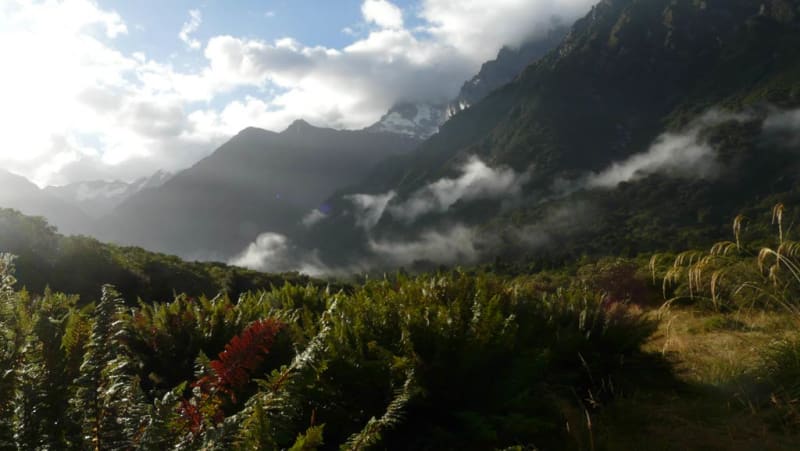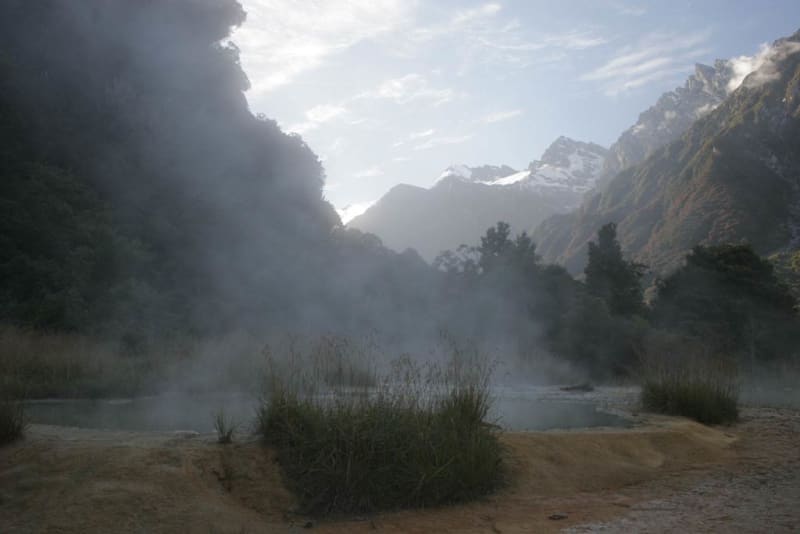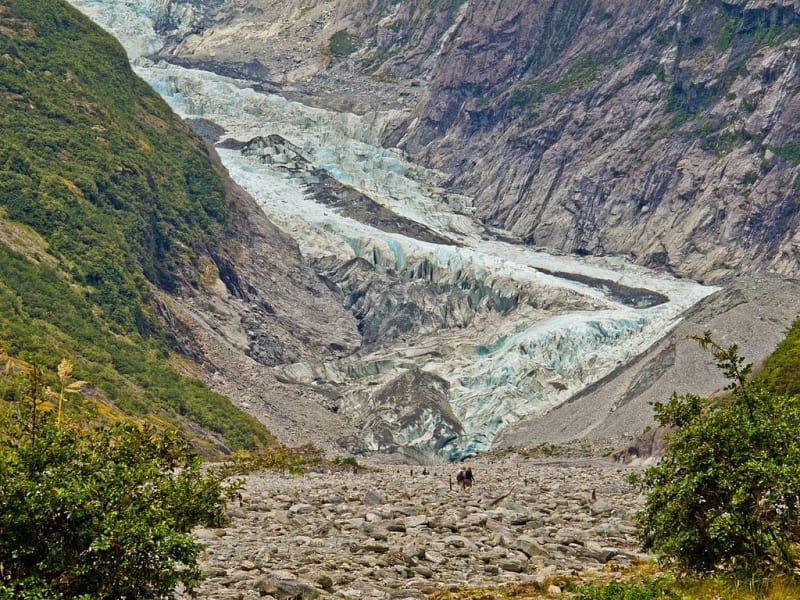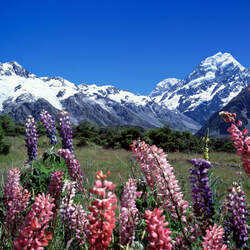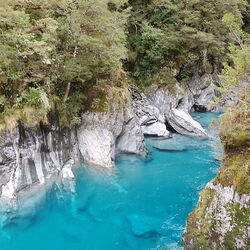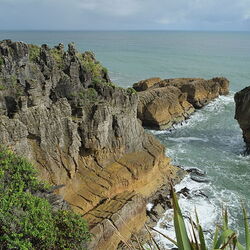Westland Tai Poutini National Park
Westland National Park (Tai Poutini) is a national park in New Zealand, located in the western part of the South Island, between the Southern Alps and the coast of the island. The park was founded in 1960. The park area is 1175 km2.
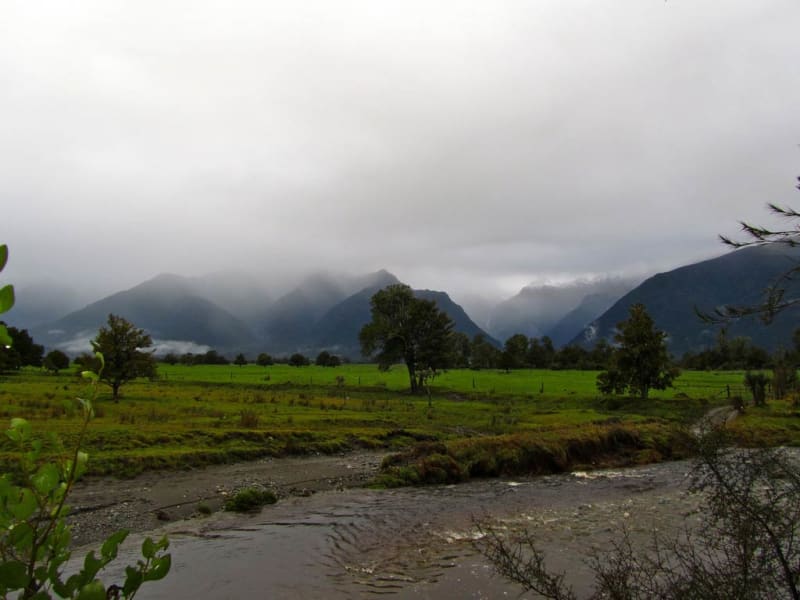
There are more than 60 glaciers in Westland National Park. Two of them, Fox and Franz Josef, are New Zealand's most famous glaciers. Deer, chamois and tar hunting are popular in the park. The Karangarua River flows through the park. The advantage of the park is the diversity of its landscapes. The eternal snows of the Fox and Franz Josef glaciers border the tropical forests here. Stormy rivers flow into picturesque lakes where flocks of wild birds feed. This park, along with three others (Mount Cook, Fjordland, Mount Espring), is part of the vast territory of Te Wahipunamu with an area of 26,000 km2, which was included in the UNESCO World Heritage List in 1990.
The Franz Josef Glacier (Maori Ka Roimata o Hinehukatere) is a glacier located in the Westland National Park in the west of the South Island of New Zealand. Together with the Fox Glacier 20 km to the south, this glacier is unique in that it descends to a distance of only 240 m above sea level, passing through the temperate moist forest around it. From the point where the glacier ends, the Vaiho River begins. The length of the glacier is 12 km. In the Maori language, the glacier is called "Ka Roimata o Hinehukatere", which can be translated as "tears of Hinehukatere". According to the legend of the local tribes, a girl named Hinehukate was very fond of walking in the mountains, and persuaded her lover Tave to go with her to the mountains. Her lover died in a landslide, and the girl's tears gave rise to a glacier. European explorers named the glacier after the Austro-Hungarian Emperor Franz Joseph.
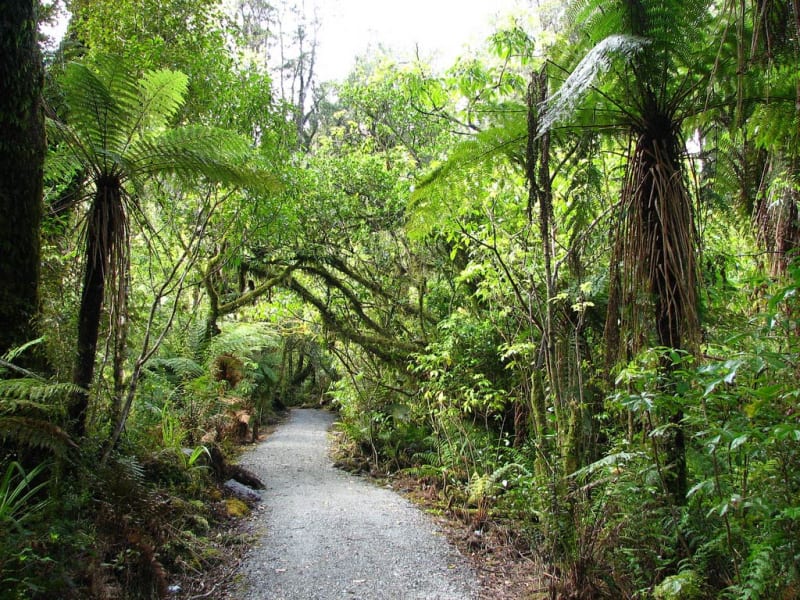
The Fox Glacier is one of the most easily accessible ice rivers on the planet. It was named in 1872, after the visit of then Prime Minister Sir William Fox. The length of the glacier is 12 kilometers, the height of the fall is 2.6 kilometers. The glacier ends at an altitude of only 300m. above sea level. Unlike most glaciers on the planet today, Fox is not shortening, but rather lengthening. This trend has been observed since 1985. The average height is about one meter per week. This phenomenon is associated with the regular abundance of precipitation in the upper reaches of the glacier, the highest altitude region of New Zealand. At the foot of each glacier, you can hear the unusual sounds of ancient ice, reminiscent of grinding. It's ice sliding down a dilapidated valley. The melting of the glacier gives rise to the Fox River. The attraction of the Fox Glacier lies in the fact that in the last kilometers it crawls through a gorge covered with dense jungle. The contrast of lush greenery, flaming rata flowers, intertwining vines, tree ferns and blue ice is very exotic.
During the last ice Age, the Fox Glacier reached the ocean and melted when it came into contact with seawater. The retreat of the glacier left behind a series of moraine deposits. The famous scenic Lake Matheson was formed as a result of the melting of the glacial lens left by the shortening glacier. Lake Matheson is also called the Mirror Lake. Fox Glacier is super popular among tourists. During peak season, it attracts over a thousand visitors a day.
There are several ways to explore glaciers. You can walk to the end point of the glacier or hike through the forest to the observation deck. Another option is to join a guided glacier walking tour – equipment is provided. You can also take to the air and look at the glaciers from a helicopter or a small plane. A day trip to the hot pools requires a moderate level of physical fitness and little travel experience. The climbing experience will be useful for completing the Copeland track, which crosses the "great divide".


